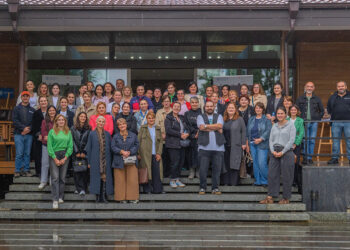On the morning of January 15, Russia launched a large-scale missile attack against Ukraine, deploying Kh-101, Kh-22, and Kalibr cruise missiles, according to Ukraine’s Air Force. This attack followed Russia’s threats of retaliation after Ukraine targeted military and industrial sites across Russia on January 14.
Ukraine’s Air Force issued a nationwide aerial alert early on January 15, warning of a group of Tu-95MS strategic bombers taking off from Russia’s Olenya airfield in Murmansk Oblast. Additionally, Russia reportedly launched ballistic missiles from Belgorod Oblast.
Explosions were reported in Kharkiv, Khmelnytsky Oblast, and Ivano-Frankivsk Oblast. Lviv Mayor Andrii Sadovyi confirmed that Russian forces attacked the energy infrastructure in the Lviv region. In the morning, officials from Lviv Oblast reported that critical infrastructure in two districts was hit, but there were no reported casualties, and the extent of the damage was not disclosed.
In Ivano-Frankivsk Oblast, Svitlana Onyshchuk, head of the military administration, confirmed that critical infrastructure facilities were targeted, though there were no casualties.
Ukraine’s state grid operator, Ukrenergo, implemented emergency blackouts as a preventive measure, announced Energy Minister Herman Haluschenko.
“It’s the middle of winter, and the target for the Russians remains the same: our energy sector,” President Volodymyr Zelensky wrote on Telegram. “More than 40 missiles were involved in this strike, including ballistic missiles. At least 30 were destroyed, and there were also more than 70 Russian attack drones overnight,” he added.
Zelensky also emphasized the need to strengthen Ukraine’s air defenses, noting that promises made by NATO allies have yet to be fully realized.
By mid-morning, an all-clear was issued for much of the country.
Ukraine Brings Back 25 People from Russian Captivity, Including Azovstal Defenders
On January 15, President Zelensky announced that Ukraine had successfully brought back 25 Ukrainians from Russian captivity, including defenders from the Azovstal steel plant in Mariupol. The returning prisoners of war (POWs) had been captured during key defense operations in Mariupol, Kharkiv, Donetsk, Zaporizhzhia, and Kherson regions. Zelensky noted that some of the POWs were suffering from serious injuries and illnesses.
The exchange took place on a 25-for-25 basis, and Ukraine has made significant progress in prisoner exchanges over the past year, having conducted 11 exchanges and securing the release of 356 individuals in 2024. Since the invasion began, nearly 4,000 people have been freed, with 1,358 released in 2024.
Zelensky expressed gratitude to the United Arab Emirates for mediating the exchange process.
Zelensky: Ukraine’s Military Now Totals 880,000 Soldiers, Facing 600,000 Russian Troops
On January 15, President Zelensky stated that Ukraine’s military now comprises 880,000 soldiers, tasked with defending the country against 600,000 Russian troops concentrated in various regions. Speaking in Warsaw alongside Polish Prime Minister Donald Tusk, Zelensky acknowledged that the concentration of Russian forces in specific areas gives them a numerical advantage in those regions.
Ukraine has faced manpower shortages, especially in the infantry, as Russia has intensified its offensive in Donetsk Oblast since the summer of 2024. On January 14, controversy arose over reports that members of Ukraine’s Air Force were being transferred to infantry units to help address these shortages.
The General Staff of Ukraine’s Armed Forces denied claims that technical and aviation personnel were being moved, stating that these resources were being bolstered instead. Critics have called for mobilization reforms to address demographic challenges and uneven recruitment.
In a positive development, Zelensky highlighted Ukraine’s progress in arms production, noting that Ukraine now meets 33-34% of its annual weapons needs, up from less than 10% before the full-scale invasion. However, over 60% of Ukraine’s weaponry is still supplied by Europe and the US, with each contributing about 30%.
Compiled by Ana Dumbadze














